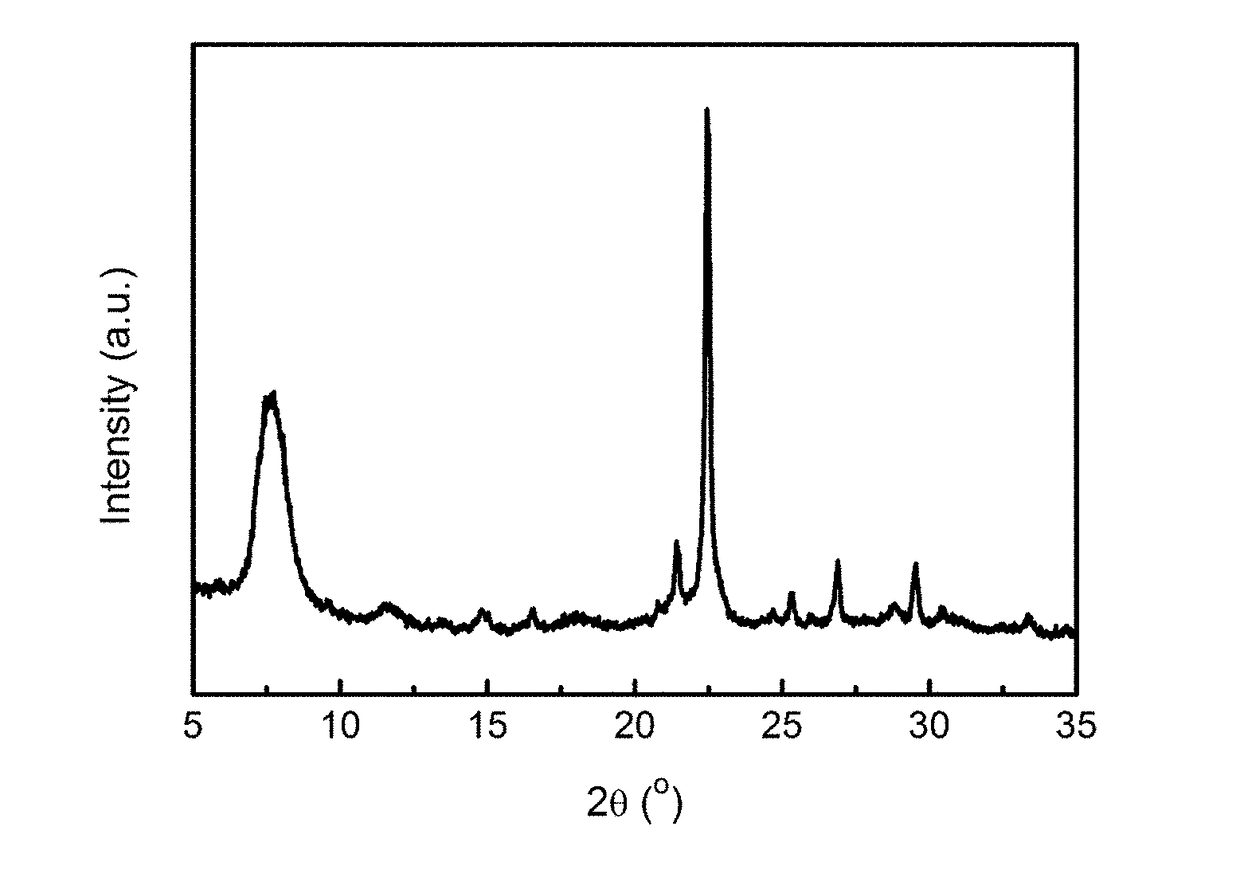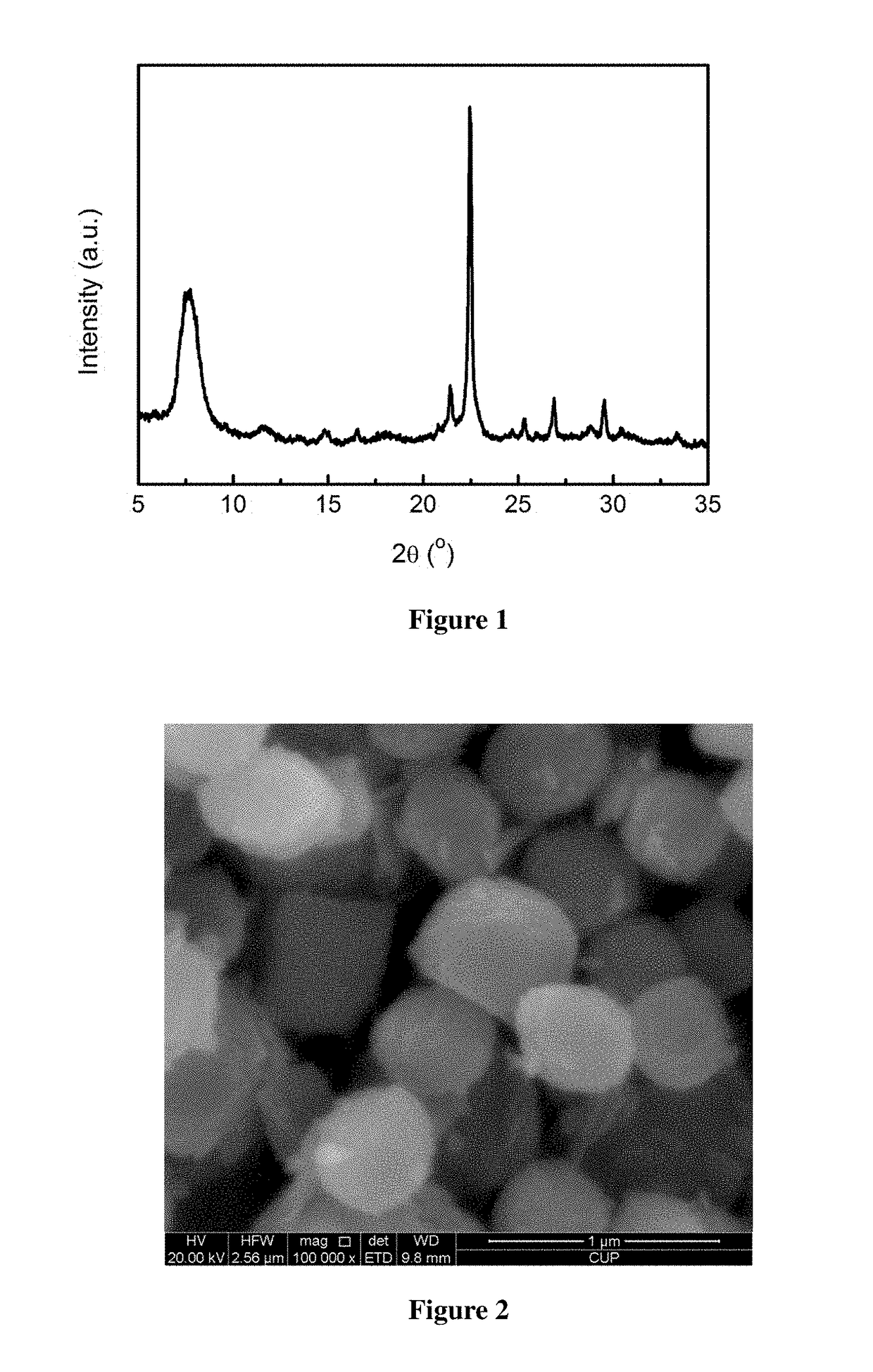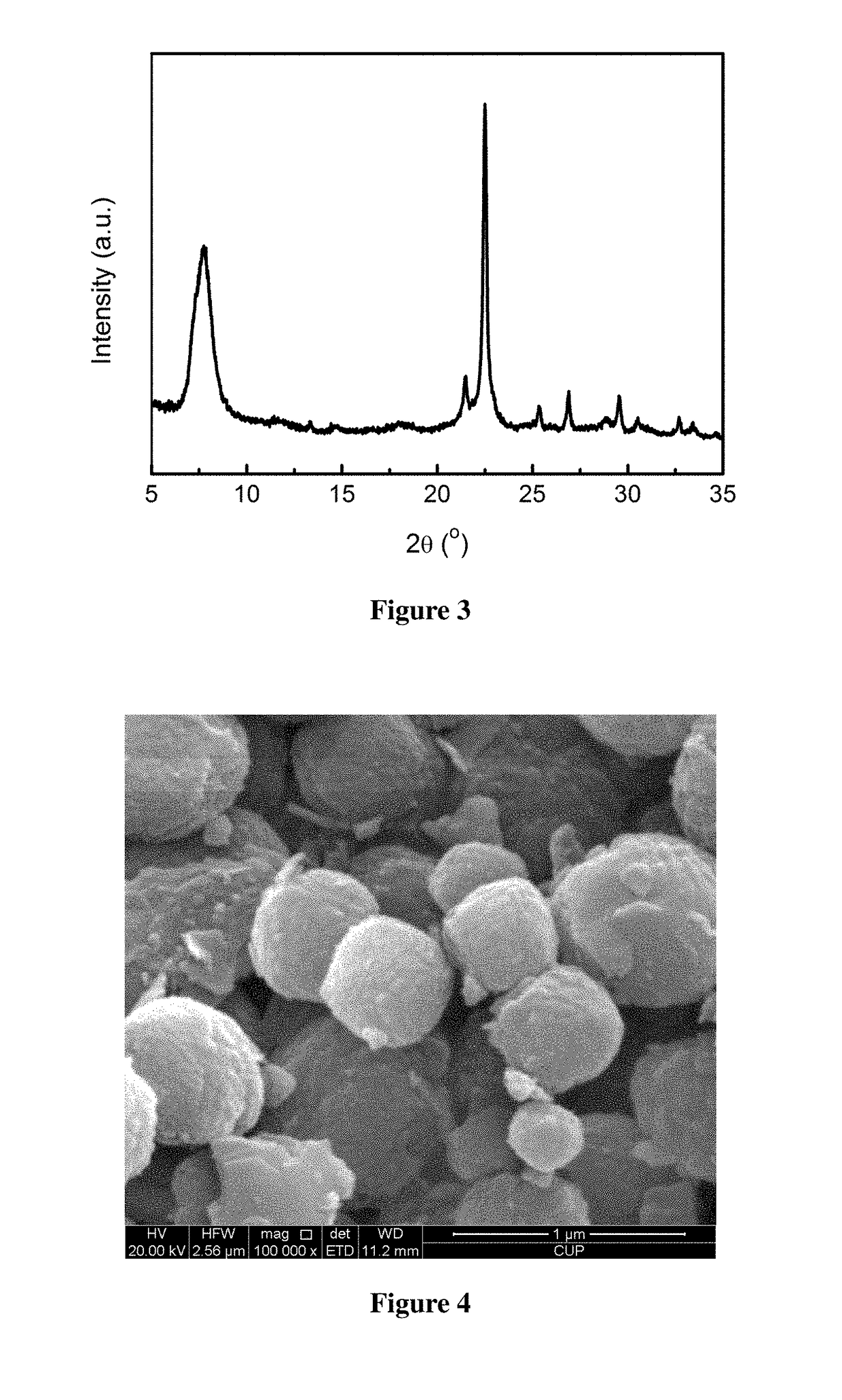Preparation method for beta zeolite
a molecular sieve and molecular sieve technology, applied in the direction of molecular sieve catalysts, crystalline aluminosilicate zeolites, chemical/physical processes, etc., can solve the problems of reducing the cost of synthesis, high cost of synthesis, practical industrial application, etc., to achieve controllable silica-to-alumina molar ratio of products, easy to use raw materials, and simple process
- Summary
- Abstract
- Description
- Claims
- Application Information
AI Technical Summary
Benefits of technology
Problems solved by technology
Method used
Image
Examples
example 1
[0041]Activation of minerals: 50.00 g of a diatomite powder was weighed and calcined at 800° C. for 4 h for use. 12.00 g of a rectorite powder was weighed and mixed homogeneously with 18.00 g of solid sodium hydroxide, and 90.00 g of deionized water was added, then dried at 250° C. for use.
[0042]Preparation of the molecular sieve: 9.00 g of the calcined diatomite powder was weighed, and 43.00 g of tetraethylammonium hydroxide (mass fraction of 25%, the same below), 7.70 g of deionized water, 0.03 g of sodium chloride, 0.43 g of potassium chloride, and 0.73 g of the activated rectorite powder were added, such that the molar ratio satisfies: 0.04 Na2O:0.02 K2O:0.25 (TEA)2O:1 SiO2:0.02 Al2O3:15 H2O. After mixing uniformly, this mixture was poured into a Teflon-lined stainless steel crystallization vessel, heated to 140° C., and left to crystallization for 72 h. After the completion of crystallization, the mixture was cooled and the mother liquor was removed by filtration, and the resul...
example 2
[0043]Activation of minerals: 50.00 g of a diatomite powder was weighed and calcined at 600° C. for 8 h for use. 12.00 g of a rectorite powder was weighed and mixed homogeneously with 24.00 g of solid sodium hydroxide, and 60.00 g of deionized water was added, then dried at 200° C. for use.
[0044]Preparation of the molecular sieve: 9.00 g of the calcined diatomite powder was weighed, and 60.20 g of tetraethylammonium hydroxide, 48.21 g of deionized water, 0.03 g of sodium chloride, 0.65 g of potassium chloride, and 0.86 g of the activated rectorite powder were added, such that the molar ratio satisfies: 0.05 Na2O:0.03 K2O:0.35 (TEA)2O:1 SiO2:0.02 Al2O3:35 H2O. After mixing uniformly, this mixture was poured into a Teflon-lined stainless steel crystallization vessel, heated to 150° C., and left to crystallization for 24 h. After the completion of crystallization, the mixture was cooled and the mother liquor was removed by filtration, and the resultant was washed to neutral, and dried ...
example 3
[0045]Activation of minerals: 50.00 g of a diatomite powder was weighed and calcined at 950° C. for 2 h for use. 12.00 g of a rectorite powder was weighed and mixed homogeneously with 12.00 g of solid sodium hydroxide, and 6.00 g of deionized water was added, then dried at 350° C. for use.
[0046]Preparation of the molecular sieve: 9.00 g of the calcined diatomite powder was weighted, and 25.80 g of tetraethylammonium hydroxide, 44.65 g of deionized water, 0.60 g of sodium chloride, 0.33 g of potassium chloride, and 0.57 g of the activated rectorite powder were added, such that the molar ratio satisfies: 0.06 Na2O:0.015 K2O:0.15 (TEA)2O:1 SiO2:0.02 Al2O3:24 H2O. After mixing uniformly, this mixture was poured into a Teflon-lined stainless steel crystallization vessel, heated to 130° C., and left to crystallization for 60 h. After the completion of crystallization, the mixture was cooled and the mother liquor was removed by filtration, and the resultant was washed to neutral, and dried...
PUM
 Login to View More
Login to View More Abstract
Description
Claims
Application Information
 Login to View More
Login to View More - R&D
- Intellectual Property
- Life Sciences
- Materials
- Tech Scout
- Unparalleled Data Quality
- Higher Quality Content
- 60% Fewer Hallucinations
Browse by: Latest US Patents, China's latest patents, Technical Efficacy Thesaurus, Application Domain, Technology Topic, Popular Technical Reports.
© 2025 PatSnap. All rights reserved.Legal|Privacy policy|Modern Slavery Act Transparency Statement|Sitemap|About US| Contact US: help@patsnap.com



